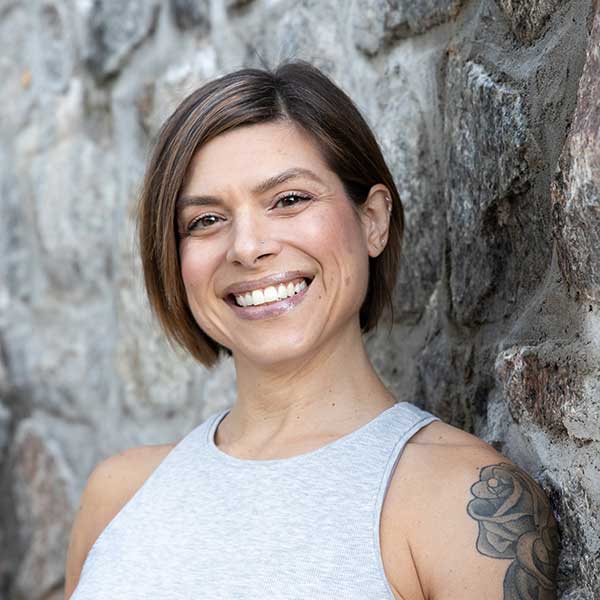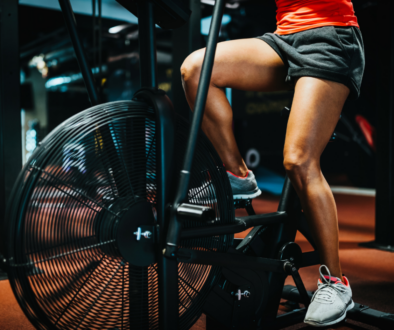3 Pillars of Fitness for Women Over 40
 If you’re a women over 40, you know it’s getting harder to be healthy and stay in shape. The struggle to keep looking and feeling good (physically and mentally) is due to many factors like life circumstances during this season of life and the cascade of changes that occurs with perimenopause. Instead of complicating fitness and hopping on the latest trend, fab, or hack, let’s get back to basics and focus our energy on the 3 pillars of fitness for women over 40: Strength Training, Nutrition, and Stress Management.
If you’re a women over 40, you know it’s getting harder to be healthy and stay in shape. The struggle to keep looking and feeling good (physically and mentally) is due to many factors like life circumstances during this season of life and the cascade of changes that occurs with perimenopause. Instead of complicating fitness and hopping on the latest trend, fab, or hack, let’s get back to basics and focus our energy on the 3 pillars of fitness for women over 40: Strength Training, Nutrition, and Stress Management.
First Pillar of Fitness for Women Over 40: Strength Training
Prioritize Strength Training 3-4 days per week in your fitness routine. You can schedule this as 3 full body days or 2 upper and 2 lower body days (which is my preferred routine). Always start with multi-joint compound movements (like Deadlifts, Squats, Overhead Presses), move on to accessory exercises (like Lunges, Step Ups, Push Ups), and end with core and/or single-joint exercises (like Hamstring Curls, Tricep Extensions). Use a mix of free weights (barbells, dumbbells, kettlebells), machines, bands, and the TRX.
Guidelines for women over 40: Complete 3 or 4 sets of 8-12 repetitions, the last 2 repetitions should be a struggle, save time by super-setting 2 exercises (like Squats and Rows on full body days or Overhead Press and Lateral Raises on upper body days). Never do full body workouts on consecutive days. You can do upper and lower body on consecutive days. Just be sure to take at least one day off before starting the next upper and/or lower body day. On off days, you can do cardio, walking, or Yoga depending on how much rest is needed.
Once you’re over 40, you can’t afford to skip the warm up and cool down. Budget 10 minutes at the beginning for dynamic stretches and 10 minutes at the end for static stretching and/or self-myofascial release with a foam roller or other tools.
If you don’t know what to do or if you need accountability, join me for online or in-person small group strength training!
Second Pillar of Fitness for Women Over 40: Nutrition
Exercise and nutrition go together like peanut butter and jelly! You can’t focus on one and neglect the other and expect results when you’re over 40. The key word for you is protein! Aim for 1g of protein per pound of body weight daily. If that sounds unattainable, you can aim for 1g per of pound of desired body weight. BUT eating less protein is NOT a hack to get you to your goal weight quicker. Eating MORE protein is the best strategy to reach your fat-loss goals. Evenly distribute your protein over 4 meals (breakfast, lunch, dinner, and a shake/smoothie). I have my protein smoothie post-workout (I workout in the morning after breakfast and I have a late lunch and dinner). Even if my “workout” that day is a long walk or yoga, I still have the protein smoothie because protein is not something that we should have more on some days and less on others.
Other nutrition tips for women over 40: Stay hydrated. If drinking enough water (100oz/day) isn’t easy, add electrolytes. Stop eating 2-3 hours before bed. Add creatine to your protein smoothie. Consider cutting back on or eliminating alcohol. Make most of your meals at home rather than eating out or grabbing takeout. Add colorful veggies to every meal (frozen veggies count too!). Get healthy fat from nuts, seeds, avocados, coconut oil, olive oil, and salmon. Avoid snacking. We need a full serving of protein (30g animal-based or 40g plant-based) to trigger muscle protein synthesis. So a 10g protein snack isn’t helpful.
Third Pillar of Fitness for Women Over 40: Stress Management
If you’re in your 40’s, you know this is a stressful season and the hormonal shifts in perimenopause lead to more anxiety and other mental health issues. When your nervous system is stuck in chronic fight or flight, you can’t improve your health and you definitely can’t lose weight or belly-fat. If you’re not sleeping well from stress or anxiety, the next day you won’t have the energy to workout or the will-power to resist the donuts in the break room or the wine you said you weren’t going to drink on weeknights. And raise your hand if you’ve said your biggest obstacle is “stress-eating.” Stop the domino effect at the beginning by down-regulating the nervous system. Do that with a weekly Yoga practice and a daily-ish meditation/breathing practice. Yoga doesn’t have to be and hour. You can practice for 20-30 minutes a couple times weekly. And a daily meditation/breathing practice can be as little as 5 minutes. Foam rolling before bed will calm your mind and body (bonus: it helps you sleep and gets you off your phone before bed!).
Other ways to manage stress include massage, acupuncture, energy healing, therapy, cultivating personal relationships, reading, relaxing, walking in nature, petting your dog/cat, engaging in a hobby, laughing, praying, journalling, and anything that you would consider “me-time.” Underappreciated ways to manage stress including maintaining a consistent schedule for eating, sleeping, and working out and staying hydrated. Replace unhealthy coping (numbing) strategies like overworking, overeating, using drugs/alcohol, doom-scrolling, shopping, isolating, and/or trying to control others with healthy stress management practices.
If you need help creating a routine or learning how to down-regulate a hyper-vigilant nervous system, email me for Yoga Therapy. I offer group and private sessions online.
For women over 40, I like to say that same things still matter, we just have less room for error. We have to double down the practices and techniques that get us results. Those results are usually looking better and feeling better. We can’t keep doing what we did in our 20’s and 30’s and expect it to work now. And we definitely can’t just do MORE of what we did in our 20’s and expect great results. If we don’t want to be burnt out, inflamed, and exhausted, trade Bootcamp classes and long runs for heavy weights; trade “fasting” for eating high-protein meals consistently; and take serious the benefits of training your nervous system and managing stress.
This post contains affiliate links.



